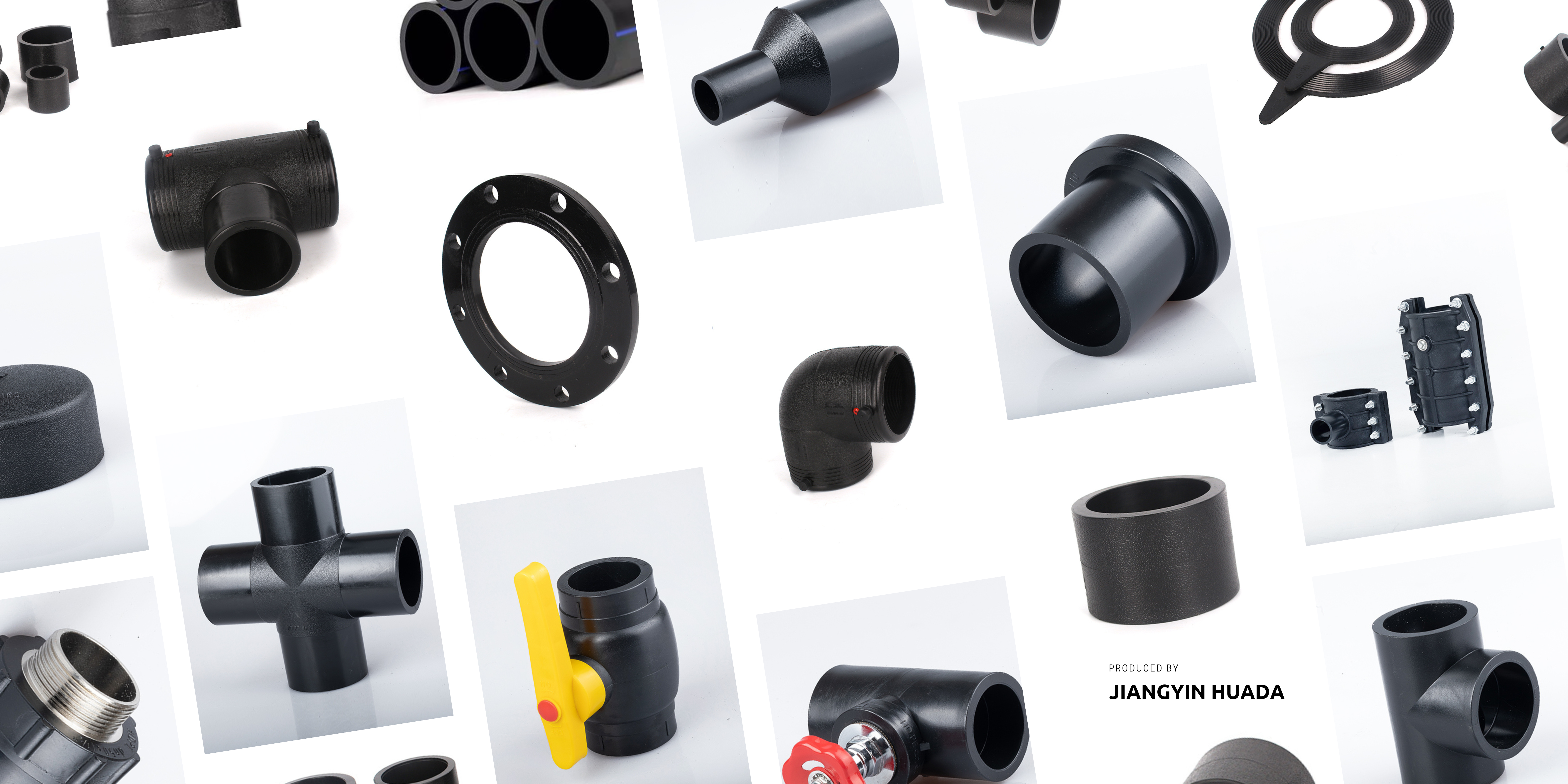In the fields of construction, engineering, and water resources, HDPE (High-Density Polyethylene) pipes are widely utilized as a common material for various projects. During the installation process of HDPE pipelines, selecting appropriate fittings is crucial, which directly affects the sealing, stability, reliability, and connection strength of the pipeline system.
The following is a diverse range of fittings used in HDPE pipelines, including but not limited to:
Heat Fusion Fittings:
Heat fusion is a commonly used connecting method for installing HDPE pipelines. Heat fusion fittings comprise couplings, elbows, tees, flanges, valves, etc. These fittings facilitate the fusion of the pipeline and fittings by heating the joint, ensuring a robust and leak-proof connection.
Electrofusion Fittings:
Electrofusion is another prevalent method for connecting HDPE pipelines. Electrofusion fittings consist of couplings, elbows, end caps, tees, etc. Through the electric fusion device, the copper wire and plastic at the connection between the pipe and the fitting are heated and melted respectively, forming a fusion zone. This method has the advantages of fast connection speed and easy operation.
Auxiliary Materials:
In addition to the aforementioned fittings, auxiliary materials, such as flange gaskets, are required for HDPE pipeline installation to enhance the sealing and stability of connections. At Jiangyin Huada, these auxiliary materials in full sizes are available, reflecting our purpose of providing a one-stop purchasing experience. Please consult our sales for further details.
To conclude, the selection of suitable fittings is paramount for the installation and operation of HDPE pipelines. During practical use, factors, such as pipeline application, environmental conditions, and pressure levels, should be considered when selecting the appropriate type and specification of fittings, in order to ensure the safe and stable operation of the pipeline system. Additionally, guaranteed high-quality products, professional installation, and regular maintenance are also the key factors in ensuring the long-term stability of the pipeline system.
Post time: Mar-15-2024





